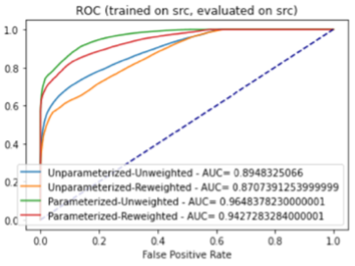Research
My current research focus is in deep learning theory, advised by Dr. Michael DeWeese.
In the past, I have also worked on machine learning methods for high-energy physics.

Heavy Particle Reconstruction
Algorithmic particle reconstruction for many-jet collisions.
In High-Energy Physics, particles often decay before they are recorded by detectors, making it difficult to study their properties and interactions. However, by examining the particles they decay into, the original particles can be "reconstructed". With the guidance of Dr. Daniel Whiteson and Dr. Michael Fenton at the UC Irvine Department of Physics and Astronomy, I simulated particle collisions and decays and wrote algorithms in C++ and Python to reconstruct heavy particles. I focused primarily on reconstructing Z0 bosons and top quarks. Using my algorithm (and a χ2 method), I was able to calculate the masses of these particles to within 2% error.

High Momentum Collision Analysis
Deep learning methods for signal-background classification in high momentum collisions.
Oftentimes, particle detectors pick up noise that hinders efforts to analyze the true data. Working with Dr. Daniel Whiteson and Dr. Aishik Ghosh at the UC Irvine Department of Physics and Astronomy, I developed deep neural networks to discriminate between signal and background data from detector readings. Because it is difficult to analyze high momentum collisions, training data is limited, and training machine learning models is challenging. To overcome this problem, we developed four identical models, trained them on low momentum data, and tested their ability to extrapolate to high momentum data, resulting in greater than 90% accuracy, significantly higher than previous methods.